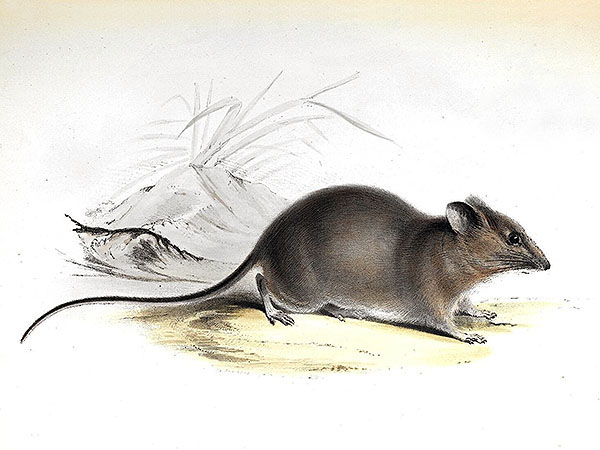Galapagos Rice Rat (Aegialomys galapagoensis ssp. galapagoensis)
“In 1835, when Darwin visited the Galapagos Islands, he found a native mouse inhabiting Chatham Island [Isla San Cristóbal] and supposed it to be the only indigenous mammal of the islands. This species was described as Mus galapagoensis by Waterhouse … who adds Darwin’s notation as follows: “This mouse or rat is abundant in Chatham Island. I could not find it on any other island of the group.” From this it is evident that Darwin made an effort to obtain further rodents, but his narrative seems to indicate that he did not spend any time on Narborough and Indefatigable islands, the principal ones from which specimens have been taken subsequently.” [1]
The Galapagos Rice Rat is one of several virtually unknown endemic rodent species that inhabit, or inhabited, the Galápagos Islands.
This species, which might include two subspecies, is known from at least two, maybe three, of the islands, with Isla San Cristóbal having been inhabited by the nominate, which was endemic to that island.
This form was apparently last collected in 1855 by Charles Darwin himself during the second voyage of HMS Beagle, it must have gone extinct only some decades later and all subsequent findings were of subfossil remains only.
*********************
References:
[1] Wilfred H. Osgood: A new rodent from the Galapagos Islands. Field Museum of Natural History 17(2): 21-24. 1929
*********************

(public domain)
*********************
edited: 01.06.2021
